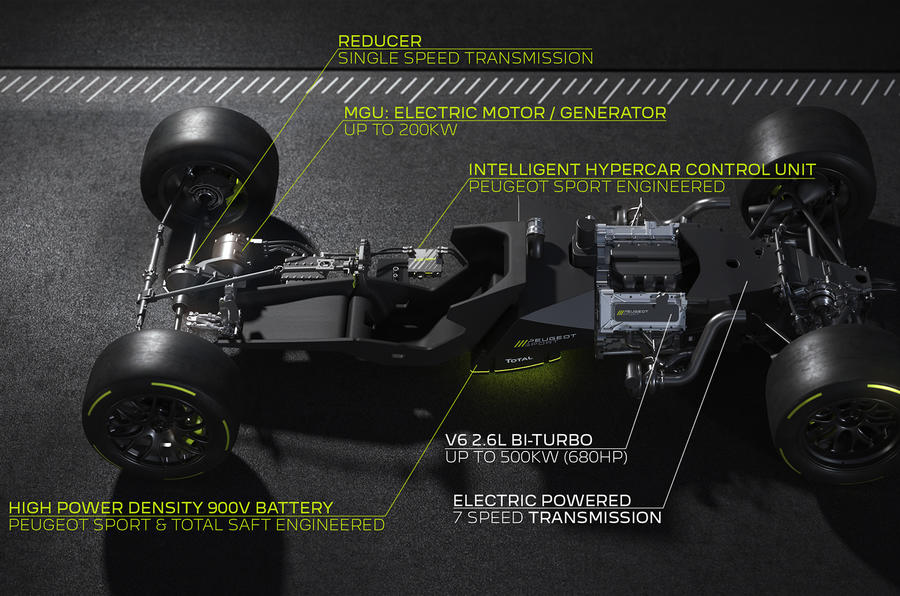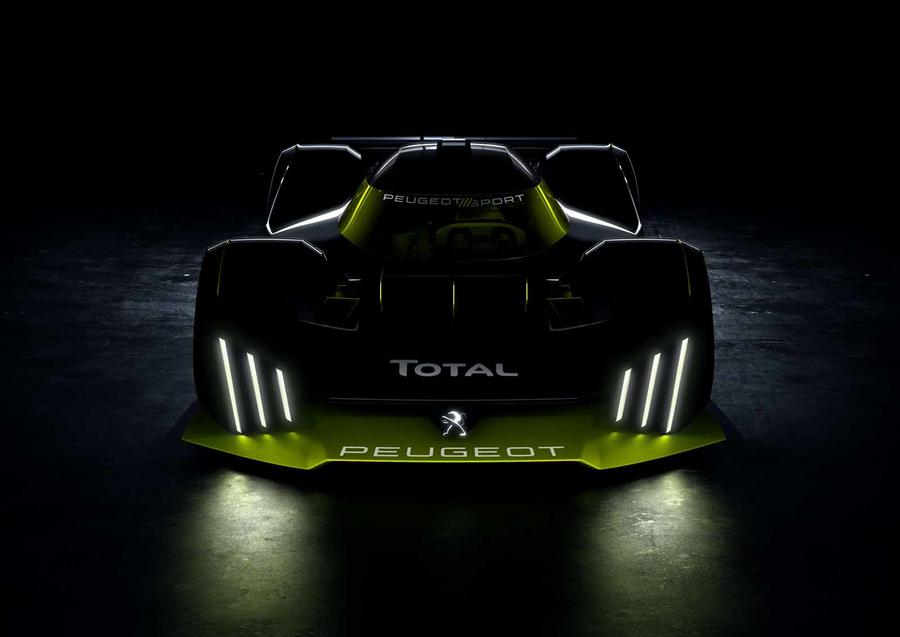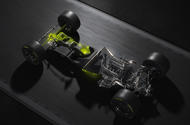Peugeot Le Mans hypercar
Peugeot outlines powertrain for new endurance racer, featuring turbocharged V6 mated to 268bhp electric motor
Peugeot will return to the Le Mans 24 Hours in 2022 with a new 670bhp hypercar that uses a hybrid powertrain built around a 2.6-litre twin-turbo V6 engine.
The French firm released the first details of the car that it will build to meet the new Le Mans Hypercar (LMH) regulations earlier this year and it has now outlined how the four-wheel-drive powertrain will work.
The system will be built around a 670bhp twin-turbo 2.6-litre 90deg V6 petrol engine, which weighs 165kg and will be mounted behind the driver. That will combine with a 268bhp front-mounted electric motor generator, which will be powered by a high-density 900V battery. The system uses a seven-speed gearbox.
The V6 unit has been developed by Peugeot Sport based on learning from both the V12 and V8 motors used in its previous 908 Le Mans racer, and the four-cylinder units developed by sibling firm Citroën in the World Rally Championship.
François Coudrain, the project’s powertrain chief, said a single turbo was considered, but the twin-turbo offers a lower centre of gravity and “the best trade-off between technology, weight, packaging of the engine’s ancillaries, reliability and performance”.
The new Le Mans rules set the maximum system output at 670bhp, so the unit will be set to draw that power from the V6 and electric motor in different ways depending on circumstances. The rules prohibit the use of electric power at speeds of below 75mph, so the petrol motor will be the sole power source at low speeds.

At full power, the output of the V6 is capped at 402bhp and will vary based on the power produced by the electric motor. When that unit comes into use, the car will switch from rear- to four-wheel drive. The battery is charged via a mains plug-in cable ahead of races, and once on track, it is charged purely by regenerative braking. If the battery is empty, the rules permit the engine to deploy an extra 3% of power (20bhp) purely to charge the battery.
Drivers will be able to adjust the level of engine braking and regeneration in order to optimise energy management, which will be vital to competition success in the new category.
The battery has been developed by Saft, a subsidiary of long-time Peugeot sponsor Total. It uses battery cells developed for high performance ahead of capacity and will be located in a carbon casing behind the driver’s head.
The new regulations will mean the new car is heavier than the current top-tier of World Endurance Championship (WEC) racers, the LMP1 class – although by how much is not yet known. It will be longer (up to five metres) and wider (up to two metres), too.

Oliver Jansonnie, technical director of Peugeot Sport WEC, said the new Balance of Performance rule “certainly sets limits, but also allows room for any technical possibilities in our development, specifically on the general shape, as long as a certain overall aerodynamic efficiency is not exceeded”.
The new hypercar rules have been shaped with cost-cutting in mind, with a season’s budget expected to be limited to around €20 million (£17m). Manufacturers have the option of developing a bespoke racer or modifying a road-going hypercar for race use.
The category regulations from the FIA governing body state that each competitor in the hypercar class must produce “at least 25 engines identical to the ones destined for a series-production car homologated for road use equipped with this engine”. Therefore, 25 identical series-production cars for road use with the engine must be produced by the end of 2022.
Peugeot has a rich history at Le Mans, winning its world-famous home race twice at the end of the Group C era, in 1992 and 1993. It returned to sports car racing in the LMP1 era, battling Audi for honours between 2007 and 2011, winning Le Mans in 2009 with its diesel-powered 908 HDi FAP.
A hybrid version of the car was under development when Peugeot pulled the plug on the endurance racing programme, just one year before the founding of the WEC in 2012. Since then, rumours suggested the car maker could return to the race, but bosses have always maintained they would only do so if the rules changed to lower costs and make a campaign more sustainable.
READ MORE
2020 Le Mans 24 Hours to run without spectators
Toyota Gazoo racing tests Super Sport hypercar ahead of Le Mans debut
Source: Autocar
